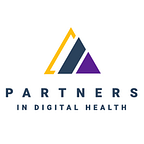Proving Value with Data
What, specifically, should be measured, optimally standardized across provider organizations? We’ll tell you!
What matters to Payors and Legislators
Healthcare using a wide variety of modalities has been provided to Americans for several decades, started by the military and Veteran’s Administration. For the most part, few providers were reimbursed for care provided using these modalities until COVID-19 in early 2020. Since then, physicians, as well as other provider types have been reimbursed for care by video, telephone, and remote monitoring. How should reimbursement be continued post-pandemic? How should this be decided?
The following care modalities are included under the telehealth umbrella below:
- Video, synchronous, asynchronous
- Telephone
- Email, including, but not limited to, store and forward photos/videos
- Text/Chat
- Remote Patient Monitoring
- Artificial Intelligence/algorithm-driven care
Reimbursement should be driven by the achievement of specific goals including, but not limited to:
- Reduced cost of care, to the US healthcare system and/or to the patient, without reduction in clinical outcomes
- Improved clinical outcomes, without increased cost, to the US healthcare system and/or patient, which may be related to improved access
Challenge
- What are the key data points and outcomes to inform stakeholders making reimbursement decisions (payors and legislators), for appropriate reimbursement to achieve the goals above? What, specifically, should be measured, optimally standardized across provider organizations? How high or low should the goals be set? For which specialties and diagnoses are these questions most important?
- This will include finding, collecting, analyzing and standardizing data available.
Audience
Payors, legislators and regulators, clinicians, and healthcare administrators
Want to learn more? Head here: https://pdhinstitute.com/proving-value-with-data
